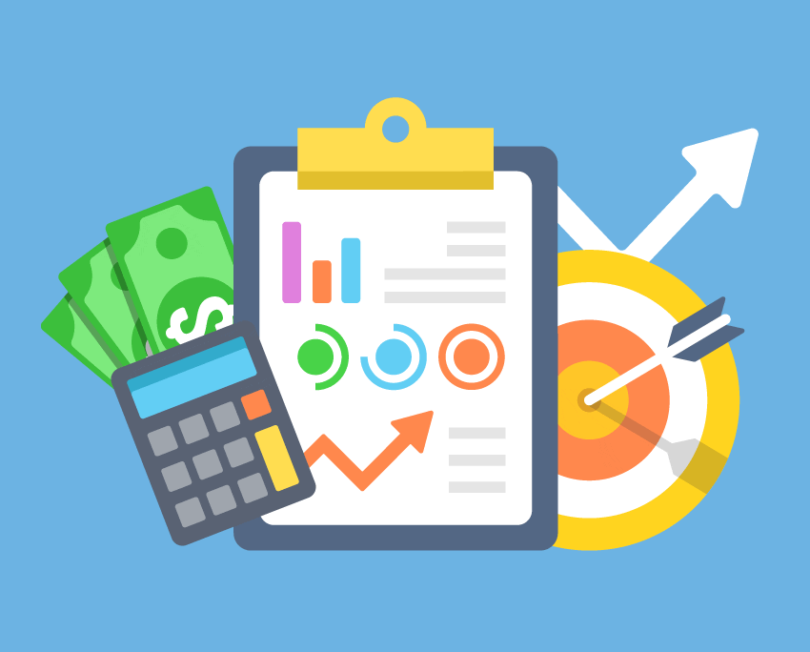Effective budgeting is essential for managing your personal finances, ensuring that your hard-earned money is being used wisely. If you’re looking for ways to improve your financial situation, understanding how to categorize your expenses is the key to success. Smart budgeting isn’t just about restricting your spending but about understanding where your money goes and making it work for you. Let’s explore how categorizing expenses can make a huge difference in your financial life.
Introduction to Smart Budgeting
Many people feel overwhelmed by their finances because they don’t have a clear picture of where their money is going. Smart budgeting is the process of planning your finances in a way that allows you to maintain control over your money, spend intentionally, and save effectively. Categorizing your expenses is the core of this process, making it easier to track spending, identify waste, and allocate resources to achieve financial goals.
Finance management is not just for the wealthy or business-minded individuals—everyone needs to take control of their finances to save money and achieve financial stability. This guide will help you understand how to categorize your expenses and make the most of your budget.
Why Is Smart Budgeting Important?
Smart budgeting allows you to allocate funds properly so you can achieve both short-term and long-term financial goals. Without a clear budgeting strategy, it’s easy to overspend or allocate money in the wrong places, leading to financial stress. Smart budgeting can help you:
- Gain financial clarity: Know exactly where your money is going.
- Save money: Identify areas where you’re overspending and make adjustments.
- Reduce financial stress: With a solid plan, you can avoid surprise bills and enjoy peace of mind.
- Reach your financial goals: Whether it’s saving for a house, vacation, or emergency fund, a budget ensures you’re on track.
How to Categorize Expenses in a Smart Budget
The first step in smart budgeting is learning how to categorize your expenses effectively. This helps you stay organized, see patterns in your spending, and ultimately make better decisions.
Fixed Expenses
Fixed expenses are costs that stay the same each month. They are predictable and typically essential, which makes them easier to budget for. These include:
- Rent/Mortgage Payments
- Utilities (electricity, water, internet)
- Insurance premiums (health, car, home)
- Loan repayments
Fixed expenses are usually non-negotiable, but by categorizing them, you can see if there’s room to reduce costs, such as refinancing a loan or negotiating a lower insurance rate.
Variable Expenses
Variable expenses fluctuate month-to-month based on usage or lifestyle choices. These can include:
- Groceries
- Entertainment (movies, dining out)
- Transportation (gas, public transit)
- Clothing
While these expenses vary, they are often easier to adjust. For example, you might find that you’re overspending on dining out and can redirect those funds to savings instead.
Savings & Investments
Don’t forget to include savings as a category in your budget. This is where you allocate funds for your future. Sub-categories might include:
- Emergency fund: A safety net for unexpected expenses.
- Retirement savings: Contributions to your 401(k), IRA, or other retirement accounts.
- Investments: Money set aside for stocks, bonds, or real estate.
When you treat savings as a fixed part of your budget, you prioritize your future financial security.
Discretionary Spending
Discretionary spending is non-essential spending, the fun part of your budget. This can include:
- Hobbies and recreation
- Travel
- Subscription services (Netflix, gym memberships)
It’s important to set a limit for discretionary spending to prevent it from overtaking essential categories.
Best Practices for Personal Finance Management
Managing personal finances doesn’t have to be complicated. Here are some tried-and-true tips for mastering finance management:
Set Financial Goals
Start by setting clear financial goals, both short-term and long-term. These goals could include building an emergency fund, paying off debt, or saving for a specific purchase. Clear goals provide a roadmap for your budgeting process and motivate you to stick to it.
Track Your Spending
You can’t manage what you don’t measure. Tracking your spending lets you see where your money is going and helps you stay on top of your budget. You can use budgeting apps, spreadsheets, or even a simple notebook to keep a record of your spending.
Create a Spending Plan
Once you’ve categorized your expenses, create a spending plan that aligns with your goals. The 50/30/20 rule is a simple strategy: 50% of your income goes to needs, 30% to wants, and 20% to savings and debt repayment. This rule ensures that your essentials are covered while still allowing some room for enjoyment and savings.
Automate Your Savings
One of the easiest ways to save money is to automate your savings. Set up automatic transfers to your savings or investment accounts. When the money is moved before you have the chance to spend it, you are more likely to stick to your savings goals.
Review and Adjust Regularly
Your financial situation can change, and so should your budget. Review your budget monthly and make adjustments as needed. This helps you stay flexible and ensures that your budget remains effective over time.
Common Budgeting Mistakes to Avoid
Even with a great budgeting plan, mistakes can happen. Here are some common pitfalls and how to avoid them:
Not Accounting for Irregular Expenses
Expenses like car repairs or holiday shopping can throw off your budget if you’re not prepared for them. Include a category for irregular expenses and set aside a little each month to cover these costs when they arise.
Underestimating Variable Expenses
It’s easy to underestimate costs like groceries or entertainment. Be realistic when setting your budget for these categories and track them closely to avoid overspending.
Not Reviewing Your Budget Regularly
Your budget should be a living document that you adjust regularly. If you’re not reviewing it, you may miss opportunities to save or areas where you’re overspending.
The Importance of Saving Money in Smart Budgeting
One of the biggest benefits of smart budgeting is the ability to save money. By categorizing expenses and tracking your spending, you can easily identify areas where you’re overspending and redirect those funds into savings. Consistent savings can help you:
- Build an emergency fund for unexpected expenses.
- Save for major purchases like a home or car.
- Invest in your future through retirement savings.
Smart budgeting not only helps you achieve immediate financial goals but also sets you up for long-term financial success.
Tools for Smart Budgeting and Expense Categorization
There are plenty of tools available that can make budgeting and expense categorization easier. Here are a few of the most popular:
Budgeting Apps
Apps like Mint, YNAB (You Need A Budget), and Personal Capital make it easy to track your spending, categorize expenses, and set savings goals.
Spreadsheets
Some people prefer a more hands-on approach with spreadsheets. You can create custom categories and track your expenses manually using tools like Google Sheets or Microsoft Excel.
Envelopes Method
For those who prefer a more tactile system, the envelope method involves allocating physical cash for each spending category. Once the cash is gone, that’s it for the month!








Leave a Comment